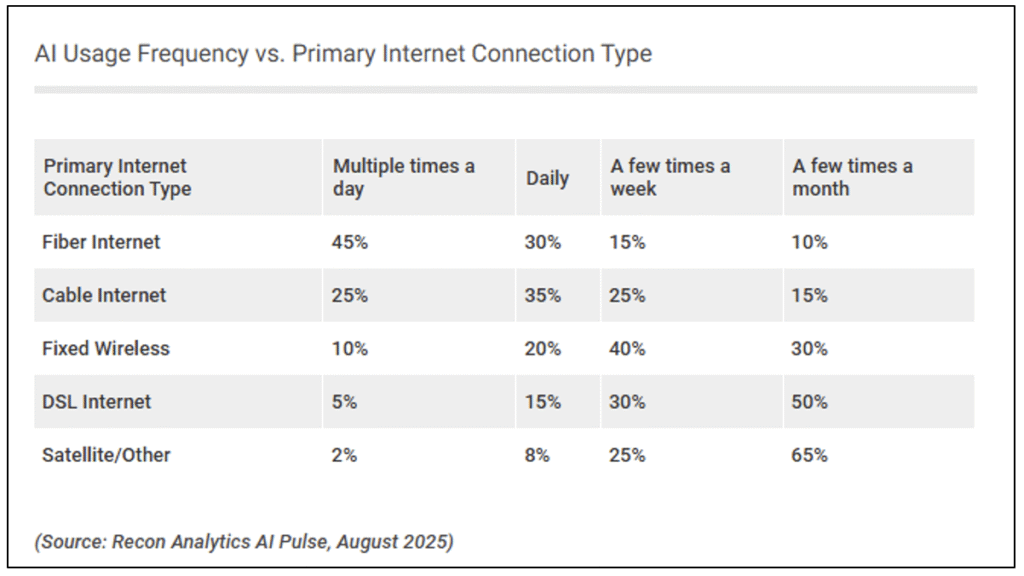
"The digital divide is evolving beyond household access to broadband. As artificial intelligence (AI) is woven into the fabric of everyday life - from smart homes and virtual assistants to creative and professional tools - a new divide is emerging: those with a fiber connection, and those without."
"While the first half of this decade was defined by the rush to connect households lacking internet access during the COVID pandemic, the second half will be driven by the urgent need for fiber infrastructure to support AI. This isn't just about the 2.3x increase in fiber miles (from 159 million to 373 million) required for data centers - it's also about the nearly 70 million American households that still lack a fiber passing."
"Since the start of the pandemic, the federal government has funded over $100 billion dollars of broadband infrastructure programs to connect the hardest-to-reach locations with high-speed internet. Some of these programs required fiber, while others adopted a more technology-neutral mandate - and most differed in speed requirements. We all know the acronyms by now: CARES, ARPA, SLFRF, RDOF, CPF, ReConnect, TBCP, and, of course, BEAD."
AI integration into everyday devices and tools is shifting the digital divide from basic household broadband access to fiber connectivity. The growth of AI-driven services demands a major expansion of fiber infrastructure, including a projected 2.3x increase in fiber miles for data centers and attention to nearly 70 million U.S. homes lacking a fiber passing. Over $100 billion in federal broadband programs since the pandemic has narrowed unserved and underserved counts from about 12 million to roughly 3.7 million homes under BEAD. Future federal funding will likely be technology-neutral and focused on remaining gaps.
Read at Telecompetitor
Unable to calculate read time
Collection
[
|
...
]